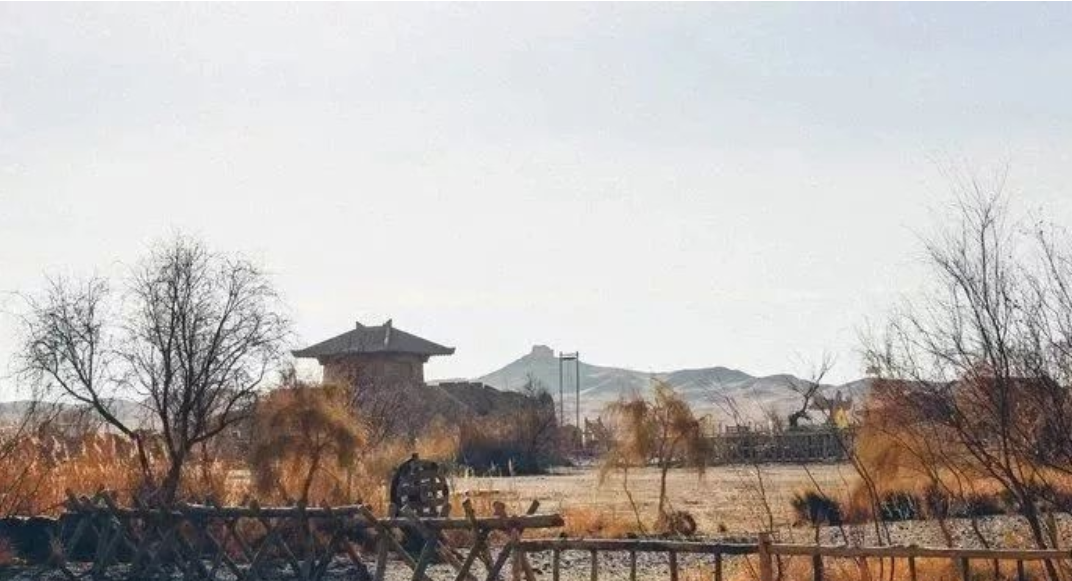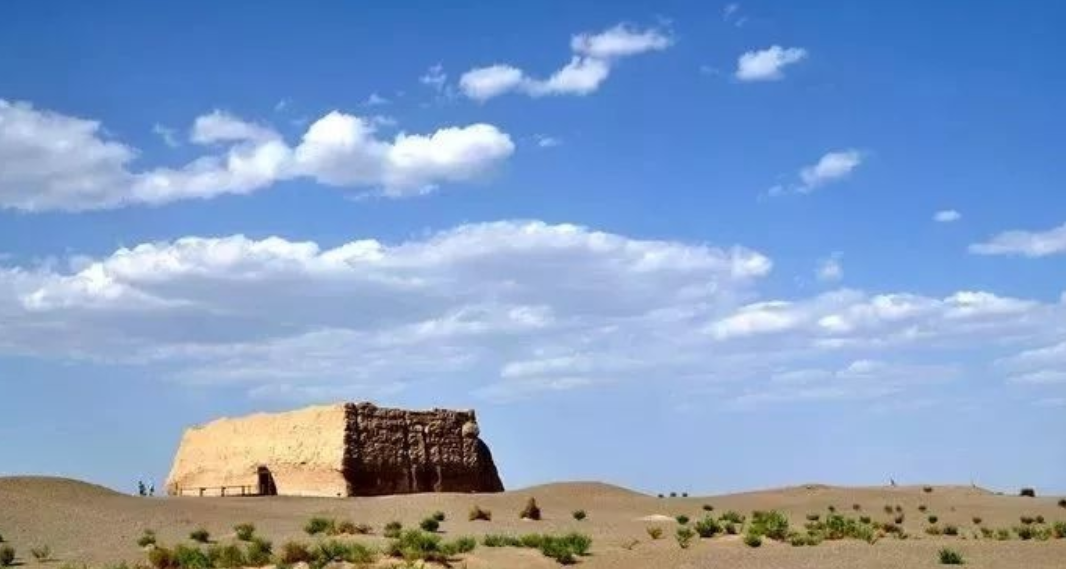The city of Dunhuang, in north-west China, is situated at a point of vital strategic and logistical importance, on a crossroads of two major trade routes within the Silk Road network. Lying in an oasis at the edge of the Taklamakan Desert, Dunhuang was one of the first trading cities encountered by merchants arriving in China from the west. It was also an ancient site of Buddhist religious activity, and was a popular destination for pilgrims, as well as acting as a garrison town protecting the region. The remarkable Mogao Caves, a collection of nearly 500 caves in the cliffs to the south of the city, contain the largest depositary of historic documents along the Silk Roads and bear witness to the cultural, religious, social and commercial activity that took place in Dunhuang across the first millennium. The city changed hands many times over its long history, but remained a vibrant hub of exchange until the 11th century, after which its role in Silk Road trade began to decline.
The Silk Road routes from China to the west passed to the north and south of the Taklamakan Desert, and Dunhuang lay on the junction where these two routes came together. Additionally, the city lies near the western edge of the Gobi Desert, and north of the Mingsha Sand Dunes (whose name means ‘gurgling sand’, a reference to the noise of the wind over the dunes), making Dunhuang a vital resting point for merchants and pilgrims travelling through the region from all directions. As such, Dunhuang played a key role in the passage of Silk Road trade to and from China, and over the course of the first millennium AD, was one of the most important cities to grow up on these routes. Dunhuang initially acted as a garrison town protecting the region and its trade routes, and a commandery was established there in the 2nd century BC by the Chinese Han dynasty (206 BC – 220 AD). A number of ancient passes, such as the Yü Guan or "Jade Gate" and the Yang Guan, or "Southern Gate", illustrate the strategic importance of the city and its position on what amounted to a medieval highway across the deserts.
The history of this ancient Silk Road city is reflected in the Mogao Caves, also known as the Qianfodong (the Caves of the Thousand Buddhas), an astonishing collection of 492 caves that were dug into the cliffs just south of the city. The first caves were founded in 366 AD by Buddhist monks, and distinguished Dunhuang as a centre for Buddhist learning, drawing large numbers of pilgrims to the city. Monks and pilgrims often travelled via the Silk Roads, and indeed a number of religions, including Buddhism, spread into areas around the trading routes in this way. There were some 15 Buddhist monasteries in the city by the 10th century, and the latest caves were carved sometime in the 13th or 14th century. The city also lay on the pilgrim route from Tibet to the sacred Mount Wutai. The caves were painted with Buddhist imagery, and their construction would have been an intensely religious process, involving prayers, incense and ritual fasting. The earliest wall paintings date back to the 5th century AD, with the older paintings showing scenes from the Buddha’s life, whilst those built after 600 AD depict scenes from Buddhist texts.
The Mogao Caves illustrate not only the religious importance of Dunhuang however, but also its significance as a centre of cultural and commercial exchange. One of the caves, known as the ‘library cave’, contains as many as 40,000 scrolls, a depositary of documents that is of enormous value in understanding the cultural diversity of this Silk Road city. The earliest text is dated to 405 AD, whilst the latest dates to 1002 AD. The arrangement of documents in this library cave suggests that they were deliberately stored there, and it seems likely that the local monasteries used the cave as a store room. They provide a picture of Dunhuang as a vibrant hub of Silk Road trade, and give an indication of the range of goods that were exchanged in the city. According to these documents, a large number of imports arrived from as far away as north-east Europe. Interestingly, the scrolls that mention merchant caravans are usually written in Sogdian, Uighur, or Turco-Sogdian, indicating that they were produced by the foreign traders in the city. The range of imported goods included brocade and silk from Persia, metal-ware, fragrances, incense and a variety of precious stones, such as lapis lazuli (from north eastern Afghanistan), agate (from India), amber (from north east Europe), coral (from the ocean) and pearl (usually from Sri Lanka). Dunhuang was not simply a recipient of trade however, and had a very active export market too. The scrolls refer to a large number of goods that were produced in city and its surrounding regions and sold to merchants, including silks of many varieties, cotton, wool, fur, tea, ceramics, medicine, fragrances, jade, camels, sheep, dye, dried fruits, tools, and embroidery. This unique view of the imports and exports from the markets of Dunhuang illustrates the vibrancy of Silk Road trade along the routes into western China.
Additionally, although they were collected and stored by Buddhist monks, these scrolls shed light on the many different religions and languages in Dunhuang across the first millennium. In addition to Buddhist texts, Zoroastrian, Manichee, Eastern Christian, Daoist, and Jewish documents can be found in this collection, suggesting that communities of many different religions lived side by side in the city. Although the majority of the scrolls are in Chinese and Tibetan, there are also texts in Sanskrit, Khotanese, Uighur, and Sogdian, as well as one Hebrew prayer, folded and carried in a small purse and probably worn as a talisman by a traveller or merchant. These were all languages of the traders who travelled to Dunhuang from the surrounding regions, and their storage in the Mogao Caves suggests that these foreign trading communities were a vital part of the city’s social structure and of the wider, cosmopolitan community.
Crafts and skills also moved along the Silk Roads as traders and craftsmen met and exchanged notes, and a small number of scrolls in the Mogao Caves illustrate the use of woodblock printing in Dunhuang, a technique that originated in China in the early 8th century. The most famous text in the library cave, the Diamond Sutra, which dates to 868 AD, was made using this technique and is the first complete printed book in the world. Woodblock printing would later spread across Asia, as traders passed on knowledge and ideas that they had acquired whilst travelling the Silk Roads.

Discussion:
What was the importance of the city of Dunhuang?
Do a little research on this city and share with the class something you find interesting.
Please do not use Wikipedia or a student blog. (Be sure to give us the link)
Situated on an oasis, the city of Dunhuang initially acted as a garrison town, but later emerged as a prominent trading city. The city played a key role as its location served as a crossroad in the silk trade routes to and from China. Because of Dunhuang’s importance as a trading center, it became a hub for cultural and commercial exchange due to the large number of pilgrims, traders, and other travelers that stopped at the oasis town. Imports arrived from Europe, the Middle East, and Western Asia, as well as sold exports produced within the city and neighboring regions to merchants.To the south of the city lies the Mogao Caves which are a collection of 492 caves that were founded in 366 AD by Buddhist monks. The caves distinguished itself as a center for Buddhist learning, and a place of pilgrimage for monks to turn to as a retreat in their quest for enlightenment. Even though Buddhism became the prominent religion in Dunhuang, the caves house scrolls, manuscripts, and relics from various religions. Some of which include Christianity, Daoism, Manichaeism, and Judaism just to name a few. This mixture of ideas give us insight into understanding the cultural diversity that occurred within the city. I have also included some links with more information involving Dunhuang and the Mogao Caves.
https://www.britannica.com/place/Dunhuang
https://www.newworldencyclopedia.org/entry/Mogao_Caves
As you mentioned, Dunhuang initially acted as a garrison town protecting the region and its trade routes, and a number of ancient passes, such as the Yü Guan or "Jade Gate" and the Yang Guan, or "Southern Gate", illustrate the strategic importance of the city and its position on what amounted to a medieval highway across the deserts. It reminds me of two Tang poems I learned, in which poets described Dunhuang's remoteness and desolation as follows:"Beyond the Gate of Jade, spring wind will never blow!" and "Of wine, won't you drink one last cup with me? West beyond Yang Gate, no old friends you'll see!".
Historic Site of Yang Gate:

Historic Site of Jade Gate:

The two poems:
http://chinesepoetryinenglishverse.blogspot.com/2013/03/boundless-and-bare-yellow-sands-embrace.html
http://chinesepoetryinenglishverse.blogspot.com/2013/04/of-wine-wont-you-drink-one-last-cup.html